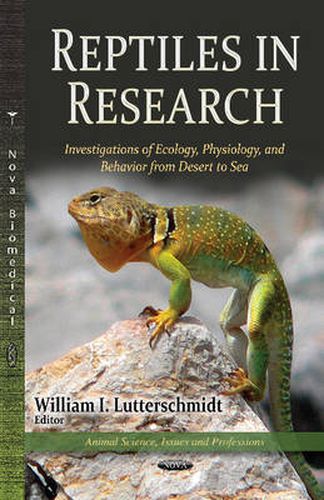Readings Newsletter
Become a Readings Member to make your shopping experience even easier.
Sign in or sign up for free!
You’re not far away from qualifying for FREE standard shipping within Australia
You’ve qualified for FREE standard shipping within Australia
The cart is loading…






Reptiles demonstrate remarkable diversity across the landscape. From inland habitats of deserts and grasslands to coastal plains and oceans, the unique adaptations and life histories of reptiles have been shaped by a suite of abiotic and biotic factors. It is the interface between the organism and its environment that present biologists with the opportunity to explore how reptiles behaviourally and physiologically respond to their environments and to determine what factors govern their ecology. This book captures the interests of all readers with a text that is foundational for the novice herpetologist, while informative for beginning students and seasoned research scientists. This book offers its readers a glimpse into the passions of scientists who find reptiles fascinating creatures of study. You will see how reptiles serve as organismal models that continue to advance our knowledge and understanding of complex biological processes and systems. Dr William I Lutterschmidt (Professor of Physiological Ecology) has invited top researchers from around the world to share their personal research interests and illustrate how environment influences the ecology, physiology, and behaviour of reptiles. This book will introduce a diversity of research fields and reptilian species, from how web-footed geckos move in desert sands to how sea snakes cope physiologically with high salinity. Topics include invasive species, urban ecology, mathematical simulation, sexual selection, hybridisation and gene flow, chemical ecology, neurobiology, spatial ecology, conservation biology, biodiversity, immunology, and molecular biology.
$9.00 standard shipping within Australia
FREE standard shipping within Australia for orders over $100.00
Express & International shipping calculated at checkout
Reptiles demonstrate remarkable diversity across the landscape. From inland habitats of deserts and grasslands to coastal plains and oceans, the unique adaptations and life histories of reptiles have been shaped by a suite of abiotic and biotic factors. It is the interface between the organism and its environment that present biologists with the opportunity to explore how reptiles behaviourally and physiologically respond to their environments and to determine what factors govern their ecology. This book captures the interests of all readers with a text that is foundational for the novice herpetologist, while informative for beginning students and seasoned research scientists. This book offers its readers a glimpse into the passions of scientists who find reptiles fascinating creatures of study. You will see how reptiles serve as organismal models that continue to advance our knowledge and understanding of complex biological processes and systems. Dr William I Lutterschmidt (Professor of Physiological Ecology) has invited top researchers from around the world to share their personal research interests and illustrate how environment influences the ecology, physiology, and behaviour of reptiles. This book will introduce a diversity of research fields and reptilian species, from how web-footed geckos move in desert sands to how sea snakes cope physiologically with high salinity. Topics include invasive species, urban ecology, mathematical simulation, sexual selection, hybridisation and gene flow, chemical ecology, neurobiology, spatial ecology, conservation biology, biodiversity, immunology, and molecular biology.